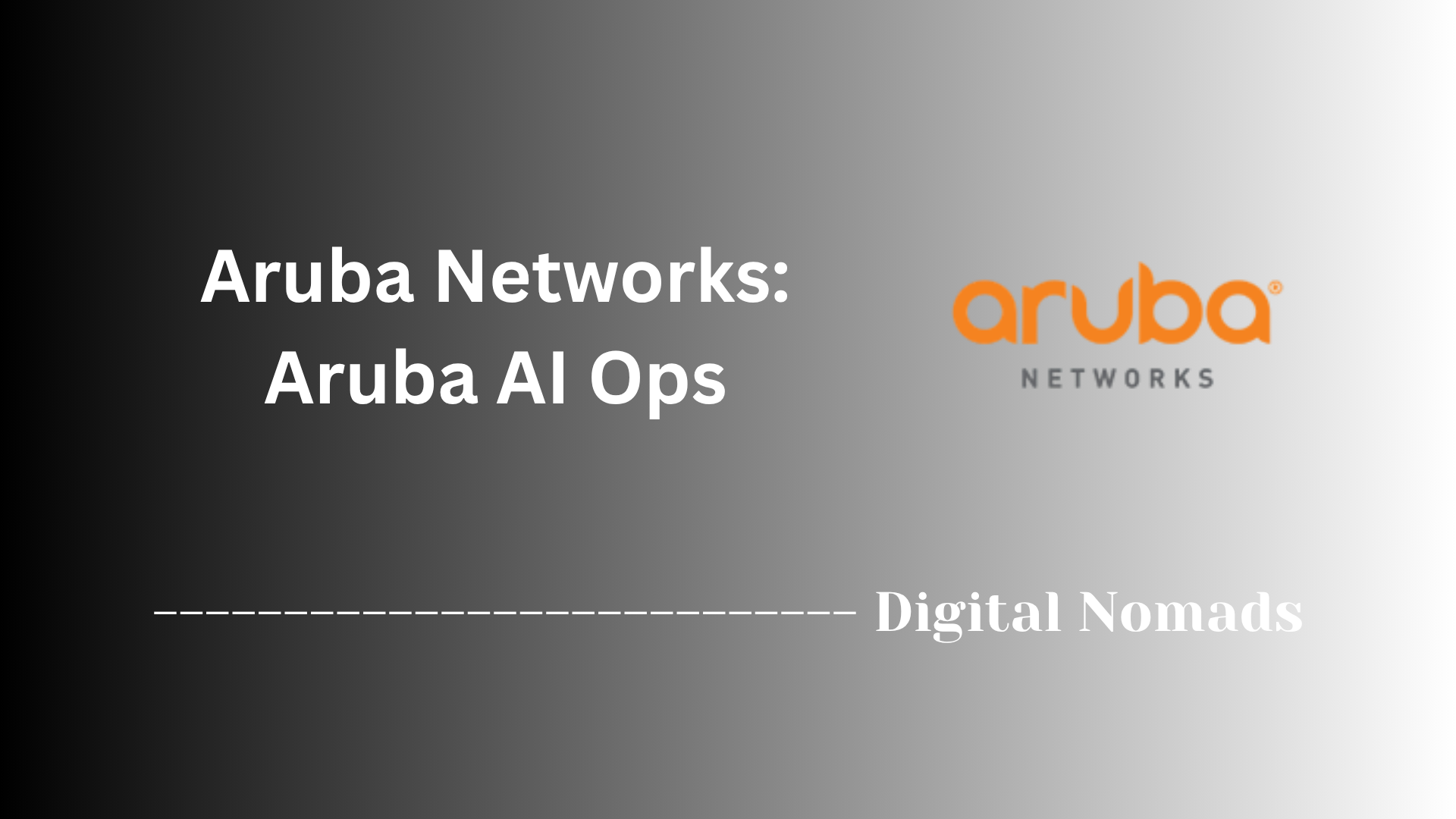Table of Contents
- Overview
- Aruba 9000 Series Gateway Technical Details
- Aruba SD-Branch Solution
- Architecture & Features
- Key Benefits
- Conclusion
Aruba Gateways & SD-Branch: Overview
What Is Aruba Gateways & SD-Branch?
Aruba Gateways & SD-Branch is a cloud-managed solution developed by Aruba Networks (a Hewlett Packard Enterprise company) to address the challenges of securing, connecting, and automating branch office and distributed enterprise networks. The system combines high-performance gateways, deep security features, and full-stack management capabilities to support wired, wireless, and WAN connectivity across large multi-site environments.
At its core, the solution has two tightly integrated components:
- Aruba Gateways: Purpose-built hardware appliances (such as the 9000 Series) that provide routing, traffic segmentation, stateful firewalling, and application-aware controls at each branch or campus edge.
- SD-Branch: A unified software architecture that brings together SD-WAN, LAN, WLAN, and edge security—centrally managed through Aruba Central’s cloud platform—enabling dynamic control, end-to-end visibility, and policy automation across every branch.
Why You Need to Know About It
Modern enterprises are rapidly expanding with remote offices, distributed teams, IoT devices, and cloud-first applications. This creates several network and security challenges:
- Distributed Complexity: Managing multiple branch sites with separate point solutions leads to silos, inconsistent security policies, and operational overhead.
- Security Threats: Branch offices and IoT endpoints are common targets for cyberattacks. Ensuring secure access, micro-segmentation, and real-time threat detection are critical.
- Demand for Agility: Organizations need to rapidly deploy, modify, or scale their network infrastructures in response to changing business needs—without extensive on-site IT intervention.
- Consistent User Experience: Employees expect reliable, high-performance access to applications no matter where they connect from, making application-aware routing and optimization essential.
Aruba Gateways & SD-Branch addresses these needs by providing centralized management, automated provisioning, robust security, and intelligent network optimization—all designed to lower costs, reduce risk, and improve agility.
How It Works: Core Concepts
- Unified Branch Network Architecture:
Aruba Gateways act as the primary connection point at each branch, delivering forwarding, firewall, segmentation, and application controls locally. - Centralized Cloud Management:
All gateways, APs, and switches connect to Aruba Central, a cloud platform for zero-touch provisioning, health monitoring, configuration, and AI-driven troubleshooting. - SD-WAN Functionality:
The system leverages software-defined WAN to dynamically steer application traffic over multiple uplinks—prioritizing critical business services, maximizing uptime, and optimizing costs. - Dynamic Segmentation & Zero Trust:
Policies based on user, device role, and application are automatically enforced at the edge, isolating traffic and maintaining a secure posture without manual VLAN or ACL management. - End-to-End Security:
Each gateway delivers advanced features like integrated firewalls, IDS/IPS, deep packet inspection, and encrypted tunnels—ensuring complete protection for all branch and IoT traffic. - AI-Powered Operations:
Aruba Central uses machine learning to provide anomaly detection, guided remediation, and application performance analytics—simplifying operations and accelerating troubleshooting.
In Summary
Aruba Gateways & SD-Branch brings together security, networking, and cloud automation to enable resilient, scalable, and easy-to-manage branch infrastructures. It is especially vital for organizations seeking to secure distributed environments, support remote-first workforces, and automate network operations in line with modern best practices.
Aruba 9000 Series Gateway Technical Details
The Aruba 9000 Series Gateways provide robust performance and integrated security capabilities tailored for SD-Branch deployments. These appliances are purpose-built for distributed enterprises requiring scalable routing, dynamic segmentation, and advanced security enforcement at the edge.
- High-Performance Routing: The 9000 Series delivers up to 4 Gbps of stateful firewall throughput, making it ideal for branch environments with high traffic demands. The platform supports policy-based routing, GRE/IPSec tunnels, and dynamic path optimization for SD-WAN.
- Compact and Scalable Models: The lineup includes models such as the 9004, 9004-LTE, and 9012—offering anywhere from 4 to 12 Ethernet interfaces and support for up to 2,048 clients and 32 access points per gateway.
- Integrated Cellular and PoE Options: Certain models like the 9004-LTE offer built-in LTE uplinks for redundancy or primary WAN. The 9012 model includes 6 PoE+ ports suitable for powering IP phones, cameras, or APs directly.
- Security and Role-Based Access Control: All models include a stateful Layer 4–7 Policy Enforcement Firewall (PEF), and support dynamic segmentation based on Aruba ClearPass policies. This ensures secure, role-aware access to resources for users and devices.
- Application Visibility & DPI: The gateways feature built-in deep packet inspection (DPI) capable of identifying and classifying over 3,000 applications. Administrators can apply usage policies or limit bandwidth on a per-app basis.
- Deployment Flexibility: Aruba 9000 Series Gateways can be deployed as headends or branch nodes, managed centrally through Aruba Central, and provisioned with zero-touch mechanisms for fast setup and scaling.
Aruba SD-Branch Solution
The Aruba SD-Branch solution is designed to unify network connectivity, security, and edge management for multi-site enterprise environments. By integrating SD-WAN, wired and wireless networking, and policy enforcement into a single architecture, Aruba provides a highly scalable and simplified branch solution.
- Unified Infrastructure: Aruba SD-Branch converges WLAN, LAN, WAN, and security into a single operating model. Aruba gateways and controllers manage WAN connectivity and enforce security policies, while Aruba APs and switches deliver branch connectivity—all centrally orchestrated through Aruba Central.
- SD-WAN Functionality: Intelligent path selection enables application-aware routing decisions across multiple uplinks (MPLS, broadband, LTE). SLA-based forwarding dynamically prioritizes real-time and business-critical applications and provides visibility into link health in real time.
- Zero Touch Provisioning: Devices shipped to remote branches are automatically onboarded and provisioned via Aruba Central. This eliminates the need for onsite IT presence, making rapid scale-outs and deployments frictionless.
- Zero Trust Security: Built on Aruba’s Zero Trust framework, SD-Branch leverages user and device identity to enforce role-based segmentation, even between internal devices. Application-layer firewall policies and secure tunneling protect east-west and north-south traffic.
- Application Visibility & Policy Control: Aruba’s deep packet inspection classifies over 3,000 applications, allowing dynamic QoS and traffic shaping. Security and bandwidth usage policies can be applied per application, per role, and per branch.
- Cloud-First Management: Aruba Central provides a single-pane-of-glass interface for monitoring, troubleshooting, and configuring all branch components. AIOps features deliver root cause insights, automated anomaly detection, and guided remediation steps.
Architecture & Features
The Aruba SD-Branch architecture is built with a cloud-native mindset that enables secure, scalable, and simplified branch networking across distributed enterprise environments. It combines intelligent network fabric design with centralized orchestration, delivering both operational efficiency and robust policy enforcement at the edge.
- Cloud-Native Orchestration: All SD-Branch components—gateways, APs, and switches—are managed through Aruba Central. This provides full-stack visibility, lifecycle automation, and policy management via a single, cloud-hosted user interface.
- Unified Policy Enforcement: Security policies span the entire network stack and are enforced consistently across wired, wireless, and WAN segments. Role-based access control leverages identity and device posture for dynamic segmentation at every point in the architecture.
- Dynamic Segmentation: Devices and users are assigned network segments based on their identity or role—not their port or VLAN. This enables east-west traffic isolation without requiring complex VLAN configurations at the branch.
- Intelligent Path Selection: Aruba gateways evaluate performance metrics—such as latency, jitter, and packet loss—to determine optimal WAN paths for application traffic. SLA-based SD-WAN routing ensures high availability and performance.
- Built-In Edge Security: Each gateway includes a full-featured Layer 4–7 firewall, intrusion detection and prevention (IDS/IPS), and encrypted tunnel termination. Application-layer security policies can be applied per branch, per user, or per app.
- Service Chaining and Third-Party Integration: Aruba SD-Branch architecture allows traffic redirection to external systems such as cloud security providers, firewalls, or analytics engines—supporting modular edge services without disrupting flows.
- Flexible Deployment Models: The architecture supports dual-role gateways that can operate as headend or branch nodes. Branch-to-branch or branch-to-data center tunnels can be created dynamically depending on the application path or traffic type.
Key Benefits
Aruba Gateways and the SD-Branch platform deliver a wide range of operational, security, and scalability benefits for distributed enterprises. These key advantages are designed to simplify network operations, reduce costs, and improve user experience across every branch location.
- Branch-to-Cloud Simplicity: By converging LAN, WLAN, WAN, and security into a unified platform, Aruba SD-Branch eliminates the need for multiple point solutions and streamlines single-pane-of-glass operations.
- Zero Touch Deployment: Rapid onboarding of gateways, access points, and switches using zero touch provisioning dramatically reduces deployment time and minimizes on-site technical requirements.
- Scalability for Distributed Enterprises: Easily supports hundreds or thousands of remote branches. Aruba Central provides cloud-hosted management with auto-scaling capabilities to grow as your environment expands.
- Improved Application Experience: SLA-based routing decisions and application-aware path optimization ensure better performance for latency-sensitive and mission-critical applications.
- Consistent Security Enforcement: Dynamic segmentation, encrypted tunnels, and application-layer firewalls provide end-to-end security that adapts to user identity and context.
- Operational Efficiency via AI and Automation: AI-powered insights in Aruba Central detect anomalies, recommend resolutions, and automate routine tasks—reducing operational overhead and troubleshooting time.
- Lower Total Cost of Ownership (TCO): Reducing on-prem hardware requirements and unifying management under one cloud-native system helps decrease CapEx and OpEx while increasing IT agility.
Conclusion
Throughout this blog post, we've taken a deep dive into Aruba's Gateways and SD-Branch solution—an enterprise-grade platform designed to simplify branch networking while enhancing security and performance.
Here are the key takeaways:
- Aruba Gateways, especially the 9000 Series, provide high-performance routing, secure role-based access control, built-in DPI, and flexible deployment options, making them well-suited for modern distributed environments.
- The SD-Branch platform unifies WAN, LAN, WLAN, and security under one architecture—backed by Aruba Central for centralized cloud management.
- Architecture & Features such as dynamic segmentation, SLA-based path selection, end-to-end firewalling, and support for third-party service chaining create a secure and scalable foundation.
- Key benefits include AI-powered operational efficiency, improved application performance, zero touch provisioning, and significant reductions in TCO for large rollouts.
Aruba SD-Branch delivers a true edge-to-cloud experience that’s not only powerful but intuitive. Whether you're building new remote sites or modernizing your existing network infrastructure, this platform equips you with the automation, visibility, and control needed to work smarter—not harder.
Thanks for reading! If you're passionate about modern network architectures, automation, or AI in the data center and at the edge, stay tuned for more deep dives like this.




